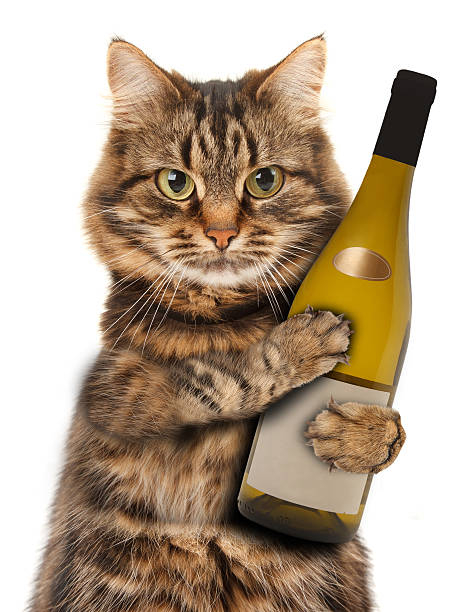If you were to buy a wine aroma kit to try and become familiar with many of the aromas associated with wine, there might be up to 88 different aromas represented! Part of the allure of wine is that it possesses such a wide range of aromas and flavors. These various aromas and flavors are the result of differences in chemical compounds produced from the ”terroir” (a combination of soil and climate that affect the wine’s character), the point of harvesting, the wine-making techniques, and the aging process (length of aging type and the type of vessel used to age the wine), etc., etc.
There are several weird wine terms used to characterize wine that can often throw wine drinkers for a loop that don’t sound inviting at all. I’ve chosen six terms to discuss today.
Why would we want to drink a wine that smells like or tastes like graphite (pencil shavings), stone (flint), tobacco (cigar box), grass, cat pee, or forest floor (barnyard or wet dirt)? Here’s why!
Graphite
We most often encounter graphite when we handle fresh pencil shavings. But the truth is, there are no aromatic compounds in graphite. What we are really smelling is the cedar in the pencils. Some say this aroma or flavor comes from the oak vessels during the aging process. Spanish wine makers think graphite aroma and flavor comes from the slate in the soil. So, I may be alone, but I don’t believe it is accurate to say a wine has the aroma of graphite or gun metal, but I do accept pencil shavings! Either way, the nose and flavor of graphite or pencil shavings or “gun metal” is undeniable in a French red from Bordeaux or a Spanish red from Priorat, and oh, how I do love these wines!
Stone
The “stoniness” of a wine, also known as flint or river rock, is another strange wine term. I know people that have sucked on a river rock or a piece of chalk trying to find the flavor of stone. What we are really talking about is the minerality of the wine. I prefer one brand of bottled water over another because I can taste the difference. The dissolved inorganic compounds in water do give water different “tastes.” The same can be said for wine. Minerality describes a wine’s mouthfeel that is attributable to the acidity and bitterness of the wine more than a specific taste and dries out your tongue.
So to what can we attribute this minerality in a wine? It is considered to be a result of environmental factors during growing of the grapes, again, a wine’s “terroir.” French white wine from Chablis or Sancerre are the best examples of wine with minerality that are said to have flavors of “stone.”
Tobacco
I find the smell of tobacco quite alluring and addictive. If it were not for the associated health issues, I would probably be a cigar smoker. Deep, rich, smoky flavors in wine can come from certain grape varieties such as Barolo, Merlot, Cabernet Sauvignon, and Syrah, but they also appear in oak-aged wines. If you smell or taste tobacco, you might also find notes of smoke, cedar, and coffee. And for you chemists out there, the compounds responsible are called terpenes. My favorite wines with tobacco or “cigar box” notes are usually from Sicily or Tuscany and an aged Bordeaux may also develop the cigar box note.
Grass
Lawn grass does not have much of a smell until you cut it. On a hot and humid day, the breaking open of the blades releases aromatic compounds (known as aldehydes) that give an abundance of herbal “green” notes. In dry white wines such as an Albariño from Spain or a Sauvignon Blanc from New Zealand, the fresh herbal notes are very appealing to many white wine drinkers. It delivers a freshness to the wine that pairs wonderfully with foods that also have herbal notes like asparagus or salads. However, in red wines, too much herbaceous quality can be a problem and an indication of winemaking gone wrong, Wines like an Argentinian Carmenere will have a characteristic herbal, grassy note that is not appreciated by some but that I do appreciate. There is a time and place for all good wine!
Cat Pee
I avoid this term even though it is quite a valid descriptor, based on negative connotations one has to the family cat urinating somewhere they shouldn’t. This aroma is found in some very good tasting Sauvignon Blancs from New Zealand, South Africa, and France and is definitely an accurate description, though not really appealing. The scent can be quite a turn off to some. I once had guests tell me that my New Zealand Sauvignon Blanc had “turned” and was terrible and asked it be taken away immediately. I tasted the wine to see if I had received a bad bottle but found the wine to be spot on. So this tart and pungent characteristic may not be for everybody, but it is my definite “go to” with scallops or oysters.
Barnyard
Is there anything pleasant about a barnyard smell? I much prefer the term “forest floor” or “wet dirt” because at least it conjures up visions of hiking through dark, earthy walking trails in the woods rather than tromping though a barn full of manure. People who don’t enjoy mushrooms often don’t enjoy wines with barnyard or forest floor notes. The odor comes from Brettanomyces – a wild yeast that is sometimes found on grape skins or in oak barrels that can make its way into wine. A French red Burgundy (Bourgogne rouge) or, less often, an Oregon pinot noir, may have this characteristic. I often find pinot noir drinkers to be in one of two camps: either the fruit forward, Cola notes of pinot noir from California Sonoma wine or the earthy pinot noir from France. I’m an equal opportunist and choose based on whether I’m having pork with a nice plum sauce or roasted chicken and mushrooms. Again, there is a time and place for every well-made wine!

